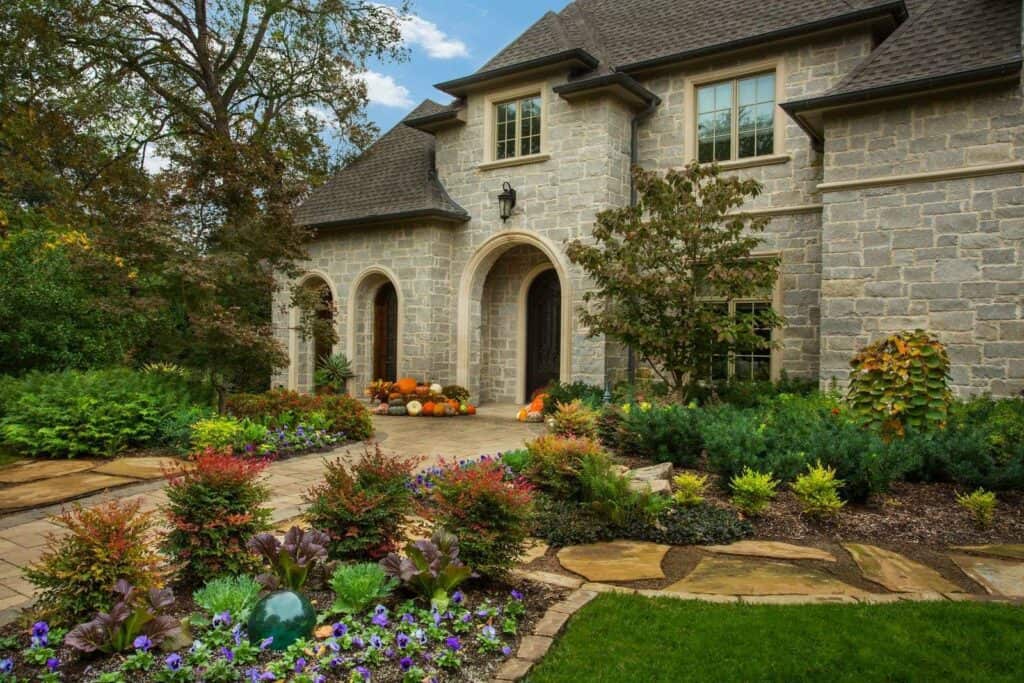Landscape Design Fundamentals Explained
Table of ContentsThe Best Strategy To Use For Landscape DesignFacts About Landscape Design RevealedAll About Landscape DesignHow Landscape Design can Save You Time, Stress, and Money.Landscape Design Fundamentals Explained
Official style theme. Credit Score: Gail Hansen, UF/IFAS The yard is an expansion of the home where a variety of activities take area. A yard can typically be divided right into three locations: public (the front yard), private (the garden), and solution (usually the side yard). The location of task areas depends mostly on the kind of location, the dimension of room required, the sort of activity, and the preferred distance to other tasks and frameworks.The outside wall of your home commonly offers as the initial wall or beginning point of an exterior space. Inappropriate usages must be separated, and associated tasks, such as food preparation and eating, must be created to make the lawn much more efficient and enjoyable. When making use of hardscape to create spaces, use building product comparable to that utilized in the house for continuity from your house right into the yard.
Connected areas. Credit History: Gail Hansen, UF/IFAS Using similar hardscape features and duplicating plants draws the eye around the garden. Vital points in the process can be emphasized with growings or features that draw attention and motivate motion in a specific instructions. Moving along the course takes a person from one location to the next and allows the customer to have a variety of experiences.
Our Landscape Design PDFs

For mental convenience plants are utilized as physical or suggested obstacles for privacy and security. Physical obstacles obstruct both the view and access to an area and consist of fencings, wall surfaces and plant bushes. Indicated obstacles, usually low growing plants, obstruct access however not the view (Figure 9). Various other features of plants consist of cleaning up the air, preventing erosion and dirt loss, retaining moisture in the soil, and returning raw material to the soil.
Physical and implied barriers. Credit Report: Gail Hansen, UF/IFAS For these reasons, the kinds of plants to be used (such as trees, hedges, or groundcovers) must be selected in the beginning of planning (Landscape Design). Plant kinds are picked for their practical capabilities so that their future objective and needed space can be thought about at the same time

Landscape Design for Beginners
Each plant mass is in front of, behind, or beside, an additional mass. Figure 11. Straight plant layers. Debt: Gail Hansen, UF/IFAS Figure 12. Vertical plant layers. Landscape Design. Credit Rating: Gail Hansen, UF/IFAS Repeating plants within a mass and repeating masses with similar plants links the yard together. The individual plant characteristics should be taken into consideration to effectively layer and mass plants.
All plant make-ups begin with the primary structure plants, the large, primarily evergreen background plants-such as moved here the trees and large hedges. These plants separate or enframe areas, manage the size of the try this room, and provide the beginning point for selecting the ideal features of the second layer, midground plants, for massing and infill.
Vital factors in the garden ought to be highlighted by the usage of special plants, unique frameworks, or garden ornaments. Marking thresholds or entryways to rooms can be made with entrances, arbors, and steps, or with making use of one-of-a-kind and vibrant plants. The form and/or design motif of the garden will commonly assist figure out the crucial factors and how they need to be highlighted.
Other important areas in the yard are prime focus, which is used to aesthetically organize a designed area. The type of centerpiece usually depends on the watching perspective. Different perspectives or point of views can reveal various compositions in the landscape that might need a range of prime focus. Contrasting structure, shape, dimension and color will record and hold the eye.
Not known Details About Landscape Design
Figure 13. Plant types. Debt: Gail Hansen, UF/IFAS After type, texture is the next leading feature of a plant; coarse, medium and click to investigate great textures can be used for contrast and emphasis in the landscape. Kind and appearance both trump shade in the garden for many of the year. Throughout specific seasons, shade will be the most obvious feature of the garden.
The pleasurable fragrance of plants, the noise of wind in the trees, the audio and structure of water, and the colors and appearances of sculptures, pots and yard furnishings all include in the experience of the garden. One detail that is often forgotten is the result of light on the appearances of the plants.

The smart Trick of Landscape Design That Nobody is Discussing
It is essential to recognize the ultimate mature size of plants so they can be placed in the right location and spaced appropriately when they are installed. Offering plants room to expand is a difficulty due to the fact that the common fully grown size is commonly based upon optimum growing conditions and the environmental conditions of a website might create a plant to enlarge or stay smaller sized.